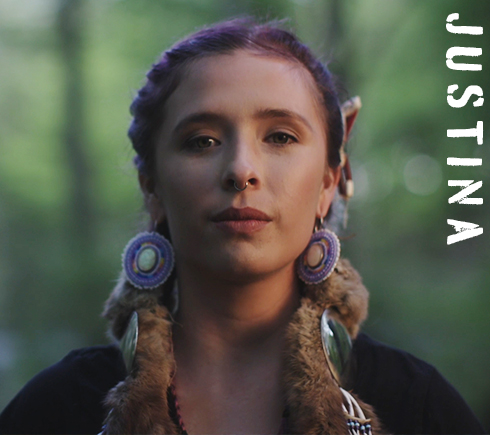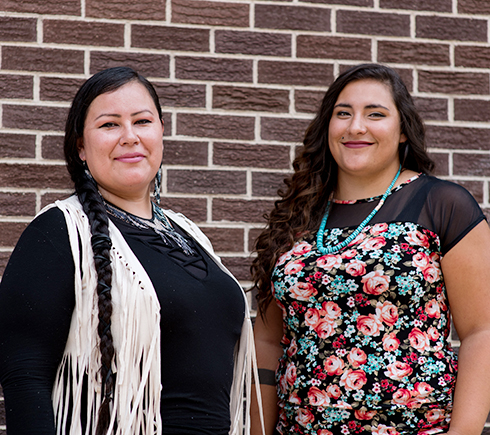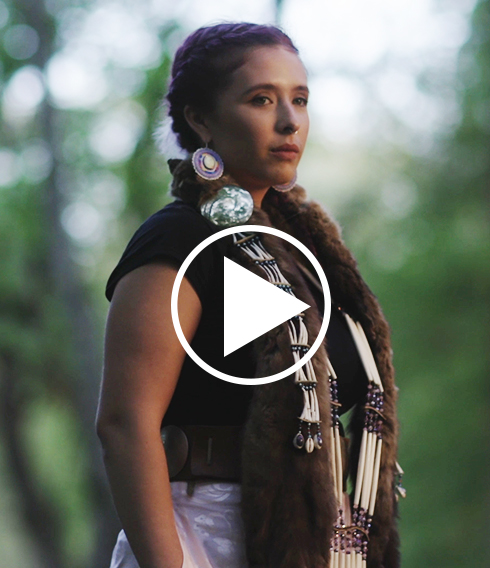
Making Back to School a Positive Experience
 I have two favorite times of the year: graduation, when we see Native students walk across the stage to receive hard-earned diplomas, and back to school, when we watch a whole new class of students – and returning classes of students – start a brand-new year filled with hope, promise, and positivity.
I have two favorite times of the year: graduation, when we see Native students walk across the stage to receive hard-earned diplomas, and back to school, when we watch a whole new class of students – and returning classes of students – start a brand-new year filled with hope, promise, and positivity.
And while there are plenty of positive higher learning experiences for American Indian scholars, not all of them experience it. It’s disheartening to acknowledge that there are broad issues and perspectives deeply seeded in society that continue to have a negative impact on Native students and their success in higher education.
Right now, only 14% of American Indians hold a bachelor’s degree! Our goal is to increase that number, but with these difficult issues facing us and our students, we have to ask ourselves, “What can we do to ensure success for all Native students who simply want a chance to learn, be successful, and help create healthy, sustainable Native communities?”
First-year students are the most likely to drop out because of an unfriendly and unwelcoming culture and environment. In order to make these students feel supported and prepared, we have started the Indigenous Higher Education Equity Initiative (IHEE), so that the College Fund can influence how higher education leaders create spaces that are more welcoming on an institutional level. We also inspire students to demand the same on their own campuses. That’s what you’re supporting when you’re supporting us.
We must create a dialogue. We must speak clearly and plainly. We know that visibility and being able to live our most authentic lives helps us succeed, gives us confidence, and helps us reach our dreams.
I ask you, as a steadfast friend and supporter of the American Indian College Fund, to show your support by pledging to be inclusive of American Indians. Acknowledge the Indigenous people on whose lands we work and live. Call out racism when it happens. Examine your business practices to ensure fair representation.
And most of all, let’s start conversations among our friends and family to help remove labels and give American Indians the space to share their identity.
Together, we can ensure that Native students have the supportive environment they need to succeed and thrive in higher education!
Pilamayayapi (thank you) for your support and friendship,
[Cheryl Sig]
Cheryl Crazy Bull
President and CEO, American Indian College Fund
MEET JUSTINA
A PROUD NATIVE-AMERICAN WOMAN FIGHTING LABELS

Hān Mítakuyāpi! Čhaŋté waštéya napé čhiyúzapi. Justina wašíču emacíyāpí kštō! Oglala Oyanke na North Carolina ematanhan. Brush Breaker, Randall, Gallegos, na Bruns tiospaye etan waun. Oglála Lakȟóta Wíŋyaŋ hemáčha Kštó, Čanté wašté napé čiyuzāpé!
[Hello relatives! My English name is Justina. I am from the Oglala Lakota Nation as well as North Carolina. I am from the Brush Breaker, Randall, Gallegos, and Bruns family. I stand before you as an Oglala Lakȟóta Woman, I shake your hand with a good heart!]
I am seen by society as a White-Passing, Native American woman. Each of these words has powerful implications for how I’m supposed to behave in society. “Native” holds the stereotype of drunk, lazy, hyper-spiritual, all giving, and hyper-sexualized. “White-Passing,” a millennial term, means I can pass through society as a white person, but this is never as simple as it sounds. To accept a “White-Passing” identity would wipe away who I come from and who made me … well, me. Thus, accepting a “White-Passing” identity would be participating in the genocide and annihilation of indigenous people.
White-Passing is a colonial tool that is rooted in the hatred of skin color and perpetuates lateral violence within communities. Self-genocide is to assimilate and kill off “the Native” to please an invasive society.
Despite my self-hatred, I realize the privilege that comes with my skin. With that privilege comes responsibility. By using this platform to share a piece of the true diversity of the indigenous experience, as well as bringing attention to indigenous issues, I hope to help other indigenous youth love their bodies despite what people may say they look like or don’t look like. I want our indigenous youth to fight for self-determination and stand for who they are in this world. To love yourself as an indigenous person is an act of resistance.
I am inspired to love myself as a LakȟótaWíŋyaŋ through the stories of my Uŋčí Maria Brush-Breaker-Randall. In her stories, she tells of discrimination because of her skin and how her sister made her realize why she should be proud. Her strength to love herself came through realizing her skin is the color of UŋčíMakȟá (grandmother earth) and to be proud of who she is because she comes from her.
Like UŋčíMakȟá, we come in all shades, and to love her is to love ourselves because we come from her. When we end the hatred within ourselves and our communities, we can begin to focus on our love and care for UŋčíMakȟá.

THE HIDDEN VALUE OF EMPLOYER MATCHING GIFTS
Supporting Native American education brings me an extraordinary return on investment.
I enthusiastically support higher education, and Native education in particular. For me, educational support is not a charitable gesture. My contribution to education is consistent with my investment strategy. The committed support for higher education, like saving and investing, is a long-term investment in the future of the individuals.
An investment in the American Indian College Fund will, I believe, yield a significant return on that investment. Furthermore, similar to compound interest and dividend re-investment, the ultimate result will yield living, lasting and self-perpetuating legacies for the Native community and ultimately for humanity.
The American Indian College Fund-supported Native sons and daughters will study, succeed, and hopefully reach back into their community. They can be the foundation for their immediate and extended family, along with their community. In addition, this support allows Native universities to continue to upgrade and improve the top-quality facilities and programs.
Thankfully, the company from which I retired matches employee donations at a three-to-one ratio when those funds are dedicated to educational institutions and entities such as the American Indian College Fund. In light of this additional 300% investment benefit, one must ask oneself, “Why wouldn’t I exploit this corporate good-citizenship to further benefit higher education?”
On behalf of,
Horace and Estella Williams Scholarship
Employer Matching Gift Program
Your gift may be doubled, or even tripled, if your employer has a matching gift program.
Check with your employer or use this online tool to see if your company has a matching gift program.

JUSTINA AND NATIVE IDENTITY
Justina, whose story is featured in this newsletter, is a proud Oglala Lakota woman. In society’s eyes, she is labeled “white-passing,” meaning she looks enough like a Caucasian/European woman to be accepted as one. Imagine if she embraced that label. It would be tantamount to self-genocide, ignoring her Native American heritage.
As we approach back to school season for our Native scholars, the American Indian College Fund is hard at work on many fronts, not just providing scholarships but making sure college is accessible and welcoming to American Indians.
A recent report Reclaiming Native Truth (First Nations Development Institute & Echo Hawk Consulting, 2018) revealed that most people believe the Native population is declining and do not think about Native people much, if at all. This is the truth of what most Native Americans experience: they are misrepresented, if they are even mentioned.
If Native students are labeled invisible, they will never be seen or heard, or live up to their potential as students. At the same time, if they are labeled in stereotypical terms – as unfortunately many of them are – then being seen doesn’t help either. That’s why we leverage every opportunity that comes along.
For example, Diet Coke’s [unlabeled] campaign. Recently, Diet Coke unveiled their new campaign title [unlabeled]. During this powerful campaign, cans of Diet Coke will be released with a simple silver-and-red design, but with no distinguishing labels on them. Because of its high visibility, [unlabeled] will hopefully help start a much-needed conversation about labels, and whether they harm or help us.
Also, Justina has an article in Teen Vogue where she discusses her challenges to hold on to her Native identity. Teen Vogue has more than 8 million visitors, and should serve as a tremendous platform for bringing awareness to the struggles of all Native students.
Our goal is to ensure that every higher education institution will choose to advance the right of Native people to go to college and to any higher education institution of their choosing and to make campuses across the nation more equitable, welcoming, and inclusive. And with your help and support, we will do just that!
Did you know?

We invite active engagement of allies to share our history, values, and visibility. You can continue to be part of that through your support of the higher educational pursuits of Native Americans and the American Indian College Fund.
